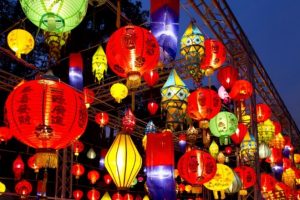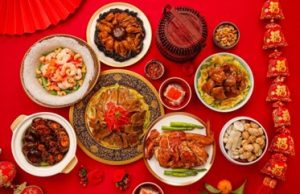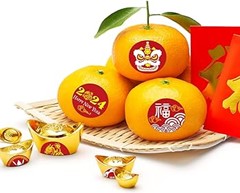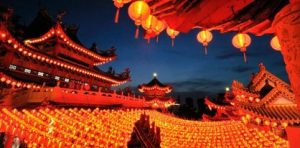
Chinese New Year – also known as Spring Festival, is the most important holiday for the Chinese, it has been celebrated for more than two thousand years. It falls on the second new moon after the winter solstice, usually between January 12 and February 19. With the introduction of the Gregorian calendar, this holiday began to be called the “Spring Festival” to separate it from the Western New Year. The date of the Eastern or Chinese New Year is determined by the lunar calendar.
Celebration will last two weeks in 2024 – from February 10 to 24.
The symbol of 2024 is the Dragon. The sole mythological creature in the Chinese astrological calendar is the dragon, embodying qualities of strength, nobility, honor, luck, and success. It holds the esteemed position as the most influential sign in traditional Chinese astrology. This year, the emblematic symbol is the green wooden Dragon, representing traits of peace, harmony, and the balance between feminine and masculine energies. Green also signifies renewal and personal development. The Year of the Dragon is anticipated to be vibrant and dynamic, offering a conducive environment for achieving goals and self-fulfillment. It particularly favors those willing to embrace new experiences without fear.
Ancient Chinese myth about the holiday
According to ancient myth, at the beginning of each new year, the Chinese hide from a monster called Nian. Nian comes on New Year’s Day to devour people, livestock, grain and food supplies. According to legend, the more food there is, the kinder and more compliant the beast will be, and will no longer attack people and leave them alone. To this day, red remains the main color of the Chinese New Year. Popular decorative elements include paper lanterns, carved patterns, folk popular prints, and calligraphic wish signs. Also, during the holiday, images of the hieroglyph “Fu” are hung, which are turned over so that happiness “falls” into the house. Since then, every time New Year comes, people hang red lanterns and red scrolls on the windows and doors of their homes and light fireworks.

Since then, every year on New Year’s Eve, people stick red paired inscriptions on their doors, firecrackers are launched, lights are on in their houses, people do not go to bed and stay awake all night, which according to Chinese believes is meant as – “to protect the year.”
The Chinese call the night of New Year “the night of meeting after separation”. For them, this is the most important moment of the entire year. The whole family gathers at the festive table for New Year’s dinner, which is distinguished by the abundance and variety of dishes. For example, New Year’s dinner is not complete without dishes made from chicken, fish and “dofu” – soybean curd, which we call “tofu”, because in Chinese the names of these products are consonant with words meaning “happiness” and “prosperity”.

In the north of China, it is customary to eat dumplings for the New Year, and in the south – “niangao” (slices made from glutinous rice). Northerners prefer dumplings because in Chinese the word “jiaozi” is consonant with the words “farewell to the old and welcome to the new.” In addition, dumplings resemble traditional gold and silver bars in their shape and symbolize the desire for wealth. For the same reason, southerners eat “nyangao”, symbolizing the improvement of life every year.
For the Chinese New Year, traditional gifts are Yasui Qian – pocket money in special red envelopes and tangerines are a symbol of financial well-being, so every guest who came to celebrate the New Year, in addition to other gifts, was sure to present the owners with two tangerines. When the guest was seen off, the hosts, in turn, gave him two other tangerines. Thus, the wish for financial success was mutual. “A pair of tangerines” in Chinese is consonant with the word “gold”, “money”, which means that by giving tangerines, wealth, success and financial well-being are attracted to the house.


Chinese New Year is a 15-day holiday. Every day, many families go to visit relatives, and also participate in folk festivals with dancing, colorful performances, masquerades and fireworks. On the Spring Festival, noisy folk festivals and fairs are held for several days in a row, where lion and dragon dances, round dances of “land boats”, and performances on stilts are performed. New Year’s festivities end after the Lantern Festival, on the fifteenth day of the first month according to the lunar calendar.

China’s culture is undeniably distinct, diverging significantly from our own customs and traditions. Embarking on a journey to China during the Lunar New Year will immerse you in a remarkably vibrant and colorful world of widespread festivities and joy! This enchanting ambiance promises to leave you with indelible memories, while the warmth of the locals, exotic cuisine, and architectural marvels will undoubtedly beckon you to return time and again.
